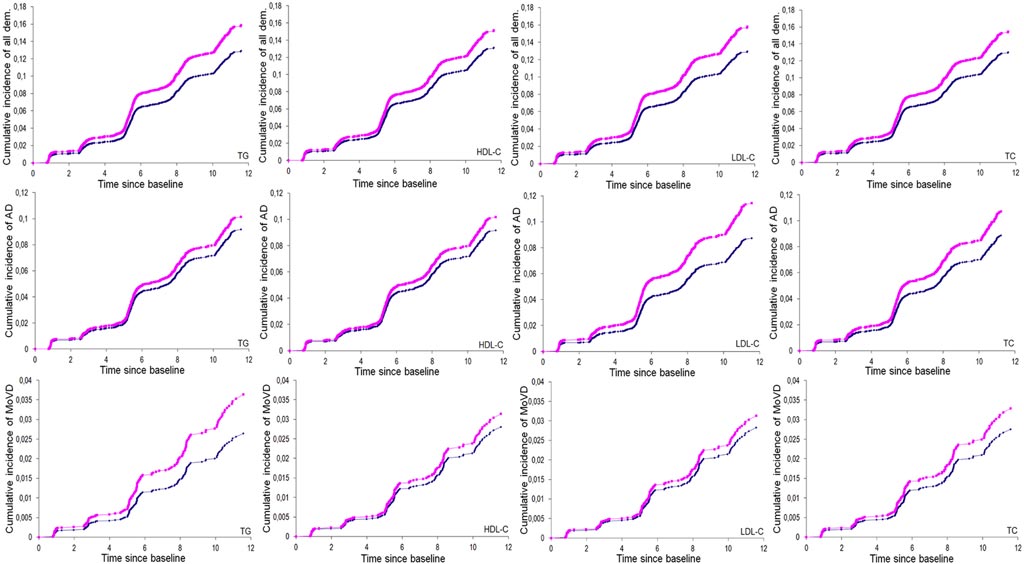Plasma Lipids Associated Differently with Dementia Incidents
By LabMedica International staff writers
Posted on 12 Apr 2017
Dementia refers to a group of neurological disorders characterized by memory loss, cognitive impairment, and disability in activities of daily living. As the primary risk factor for dementia is old age, the prevalence of dementia is increasing dramatically with aging populations worldwide.Posted on 12 Apr 2017
Vascular risk factors have been proposed as important targets for the prevention of dementia, with around a third of Alzheimer disease (AD) cases being attributable to potentially modifiable risk factors, especially vascular risk factors although trials have been inconclusive so far. As lipid fractions represent easily modifiable potential targets for prevention, exploring their relation with dementia risk is of major interest.

Image: The cumulative incidence of dementia according to lipid concentrations (triglycerides, HDL-C, LDL-C, total cholesterol) (Photo courtesy of the University of Bordeaux).
Scientists at the University of Bordeaux and their colleagues recruited 9,294 non-institutionalized persons aged 65 years and over were recruited from the electoral rolls of Dijon, Bordeaux, and Montpellier, France, between March 1999 and March 2001. Extensive follow-up examinations were performed every two years after the baseline assessment, comprising standardized questionnaires, clinical examinations, and detailed cognitive assessment. The final study sample comprised 7,470 participants from the study, mean age ± standard deviation (SD), 73.8 ± 5.3 years, and 61.0% were women, who were prospectively followed up for up to 13 years.
Fasting lipid fractions (triglycerides [TGs], high-density lipoprotein cholesterol [HDL-C], low-density lipoprotein cholesterol [LDL-C], and total cholesterol [TC]) were studied as continuous variables, and results are reported per SD increase of each lipid fraction. Analyses were adjusted for sex, study center, and educational level, as well as vascular risk factors and apolipoprotein E (APOE) ε4 genotype. Centralized measurements of baseline fasting serum TC, HDL-C, and TG were performed using enzymatic methods. LDL-C was calculated with the Friedewald formula and was considered missing for TG values greater than 400 mg/dL (4.52 mmol/L).
The team reported that 779 participants developed incident dementia 532 with AD and 154 with mixed or vascular dementia. Higher LDL-C and TC concentrations at baseline were associated with an increased risk of AD. These associations were largely unchanged after adjustment for vascular risk factors and were attenuated after adjustment for APOEε4. Higher TG concentrations at baseline were associated with an increased risk of all and mixed or vascular dementia, however, these associations disappeared after adjusting for vascular risk factors.
The authors concluded that higher LDL-C and TC concentrations were associated with an increased risk of AD. This result was independent of vascular risk factors and was attenuated after adjustment for APOEε4 carrier status. TG and HDL-C concentrations were not associated with risk of incident dementia or its subtypes after accounting for vascular risk factors. The study was published on March 28, 2017, in the journal Public Library of Science Medicine.




 assay.jpg)









